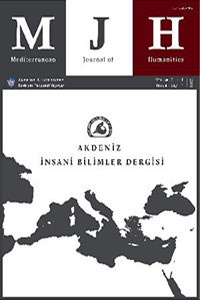Öz
Based on a critical review of selected relevant studies and with a historical perspective, this review article as a piece of secondary research (Nunan, 1992, 8) aims to point out where the world of language teaching is in terms of the competences that learners are expected to gain. It was determined that intercultural communicative competence, i.e. the knowledge, motivation and skills to interact effectively and appropriately with members of different cultures (Wiseman, 2002, 208), is currently the highly favored one after the sequential dominance of grammatical (linguistic) competence and communicative competence. The major inference drawn from the review was that although a number of particular studies draw heavily on intercultural communicative competence, they are paradoxical or not clear about where and how they differ from the tenets of its criticized predecessor, i.e. communicative language teaching, and whose culture is to be taught along with the language. Taking sides for a pedagogical philosophy predicated on intercultural communicative competence, the author concludes that it is yet a set of beliefs and procedures in need of multidisciplinary research-driven clarification and maturation and in this respect, he refers to and discusses some fundamental principles and standpoints upon which a new model based on intercultural communicative competence can be built.
Anahtar Kelimeler
Competence intercultural communicative competence foreign language teaching teaching culture intercultural communication
Kaynakça
- Akalın, S. (2004). Considering Turkish students’ communicative competence in teaching English communicative competence. Atatürk University Journal of Graduate School of Social Sciences, 4(2), 227-237. Erzurum.
- Alred, G., & Byram, M. (2002). Becoming an intercultural mediator: A longitudinal study of residence abroad. Journal of Multilingual and Multicultural Education, 23, 339-352. Clevedon: Multilingual Matters.
- Alptekin, C. (2002). Towards intercultural communicative competence in ELT. ELT Journal, 56(1), 57-64. Oxford.
- Atay, D., Kurt, G., Çamlıbel, Z., Kaşlıoğlu, Ö., & Ersin, P. (2009). The role of intercultural competence in foreign language teaching. Inonu University Journal of the Faculty of Education, Special Issue, 10(3), 123-135. Malatya.
- Balboni, P. E. (1999). Parole comuni, culture diverse. Guida alla comunicazione interculturale. Venezia: Marsilio.
- Ball, J. C., & Lau, M. P. (1966). The Chinese narcotic addict in the United States. Social Forces, 45, 68-72. Chapel Hill.
- Byram, M. (1997). Teaching and assessing intercultural communicative competence. Clevedon, UK: Multilingual Matters.
- Canale, M., & Swain, M. (1980). Theoretical bases of communicative approaches to second language teaching and testing. Applied Linguistics, 1(1), 1-47. Oxford.
- Castro, P. (1999). La dimensio´n europea en la ensen˜ anza/aprendizaje de lenguas extranjeras: La competencia intercultural. Lenguaje y Textos, 13, 41-53. A Coruña.
- Castro, P., Sercu, L., & Garcia, M. C. M. (2004). Integrating language-and-culture teaching: An investigation of Spanish teachers’ perceptions of the objectives of foreign language education. Intercultural Education, 15(1), 91-104.
Ayrıntılar
| Birincil Dil | Türkçe |
|---|---|
| Konular | Eğitim Sosyolojisi |
| Bölüm | Araştırma Makaleleri |
| Yazarlar | |
| Yayımlanma Tarihi | 30 Aralık 2011 |
| Yayımlandığı Sayı | Yıl 2011 Cilt: 1 Sayı: 2 |
| Adres: Akdeniz İnsani Bilimler Dergisi Akdeniz Üniversitesi, Edebiyat Fakültesi 07058 Kampüs, Antalya / TÜRKİYE | E-Posta: mjh@akdeniz.edu.tr |


